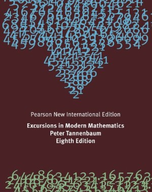Solution Found!
Solved: Table 29 (see Exercise 7) shows the preference schedule for an election with
Chapter 1, Problem 17(choose chapter or problem)
Table 29 (see Exercise 7) shows the preference schedule for an election with five candidates (A, B, C, D, and E). In this election ties are not allowed to stand, and the following tie-breaking rule is used: Whenever there is a tie between candidates, the tie is broken in favor of the candidate with the fewer last-place votes. Use the plurality method to (a) find the winner of the election. (b) find the complete ranking of the candidates.
Questions & Answers
QUESTION:
Table 29 (see Exercise 7) shows the preference schedule for an election with five candidates (A, B, C, D, and E). In this election ties are not allowed to stand, and the following tie-breaking rule is used: Whenever there is a tie between candidates, the tie is broken in favor of the candidate with the fewer last-place votes. Use the plurality method to (a) find the winner of the election. (b) find the complete ranking of the candidates.
ANSWER:Step 1 of 3
We need to calculate the winner and ranking by using plurality method.
